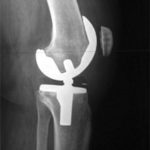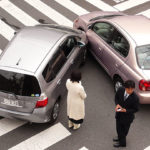Typical directors and officers (“D&O”) liability policies exclude from coverage claims brought by one of the company’s directors or officers against another, or between the company and any of its directors or officers. The purpose of the exclusion is to make clear that there is no coverage for intra-company in-fighting. It also provides insurers with some protection against potentially collusive claims. Sometimes questions arise as to who the “company” is, or whether ... Keep Reading »
NY DFS Cybersecurity Regulations Take Effect March 1, 2017
We previously reported on the New York Department of Financial Services’ proposed cybersecurity regulations. During the public comment period, the DFS received over 150 comments. In response, the DFS announced on December 28, 2016, that it had revised the proposed regulations and delayed their effective date two months. On February 16, 2017, the DFS confirmed the final regulations will take effect March 1, 2017, with required compliance 180 days thereafter (August 28, ... Keep Reading »
Third Circuit Affirms Rescission of $25 Million Contaminated Products Policy
In H.J. Heinz Co. v. Starr Surplus Lines Ins. Co., No. 16-1447 (3d Cir. Jan. 11, 2017), the Third Circuit affirmed a District Court’s order allowing insurer Starr Surplus Lines Insurance Company (“Starr”) to rescind a $25 million Contaminated Products Insurance (CPI) policy that it sold to food manufacturer H.J. Heinz Company (“Heinz”), on the basis that Heinz failed to disclose material information in its insurance application. After Starr declined coverage, Heinz ... Keep Reading »
Florida Appellate Court Rejects Jury’s Bad Faith Verdict
It feels like a black swan event: last month, in GEICO Gen. Ins. Co. v. Harvey, No. 4D15-2724 (Fla. Ct. App. Jan. 4, 2017), a Florida appellate panel unanimously overturned a jury verdict, on the ground that the plaintiff’s bad faith claim was insufficient as a matter of law. A dissection of this rara avis can yield some insight into the limits of judicial tolerance for claims against insurers. The Fatal Accident On August 8, 2006, James Harvey and John Potts ... Keep Reading »
Minnesota Discovers Limits To Its Regulator’s Power Over Insurers
In Minnesota, the Commissioner of the Department of Commerce regulates the insurance industry, and he has a statutory right to conduct investigations “related to the duties and responsibilities entrusted to” him. Last month, in Matter of the Petition of the Property Casualty Insurers Association of America, Inc., 41 Minn. State Register 830 (Dec. 7, 2016), the state’s Office of Administrative Hearings took up the question of just what those “duties and responsibilities” ... Keep Reading »
Peerless, This is Not: Sixth Circuit Finds No Latent Ambiguity in Consent to Settle Requirement in Excess Policy
Disputes between policyholders and excess insurers often involve events that occurred before the underlying defense costs or indemnity payments reached the excess layer. In Stryker Corp. v. Nat’l Union Fire Ins. Co. of Pittsburgh, PA, 842 F.3d 422 (6th Cir. 2016), reh’g denied (Dec. 13, 2016), the U.S. Court of Appeals for the Sixth Circuit addressed a situation where a policyholder settled a claim without obtaining the excess insurer’s consent to the settlement, ... Keep Reading »
Unlike Friendships, Policy Exclusions Are Not Severable In West Virginia
A homeowners insurance policy often covers every member of a family, and many policies state that the insurance applies separately to each insured. The same policies usually exclude coverage for intentional acts. But what happens when one insured is accused of negligently permitting a different, separately-covered family member to cause harm intentionally? Last month, in American National Property & Casualty Company v. Clendenen, No. 16-0290 (W. Va. Nov. 17, 2016), ... Keep Reading »
Eleventh Circuit Clarifies “Permanency” Requirement under Florida Bad Faith Statute
In Cadle v. GEICO Ins. Co., Case No. 15-11283 (11th Cir. Sept. 30, 2016), the Eleventh Circuit held that GEICO had not acted in bad faith when it failed to settle a claim after the insured did not provide any evidence of permanency during the cure period as is required by Florida law. With A Friend Like This… On July 2007, Catherine Cadle was rear-ended by Derek Friend, an underinsured motorist driving down I-95. Cadle had previously purchased insurance providing ... Keep Reading »
Florida Supreme Court Decides that Concurrent Causes Equal Coverage
It’s said that “defeat is an orphan,” but insurable losses often have multiple, concurrent causes. In some cases, one or more of those causes might be outside the scope of coverage, either by omission or exclusion. In Sebo v. American Home Assurance Company, No. SC14-897 (Fla. Dec. 1, 2016), the Supreme Court of Florida ruled that if damage results from “concurrent causes” and, as between the concurrent causes, an “efficient proximate cause” cannot be determined, it is ... Keep Reading »
Circuit Courts Restore Order to Question of Coverage for “Business Email Compromise” Schemes Under Fidelity Policies’ “Computer Systems” Fraud Rider
The financial services industry has long been on the forefront of technological advances in commerce. In the 1950’s, the Bank of America commissioned a consortium of Stanford scientists to develop one of the first commercial applications of the then-newly emerging field of “electronic brains” (aka “computers”). This effort resulted in ERMA (Electronic Recording Machine, Accounting), an automated system used for counting checks. Among other notable advances, this led to ... Keep Reading »
- « Previous Page
- 1
- …
- 29
- 30
- 31
- 32
- 33
- …
- 48
- Next Page »









